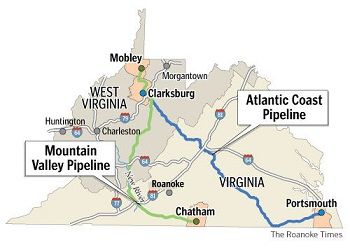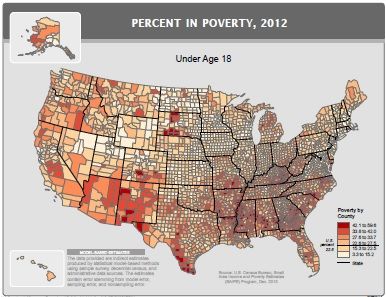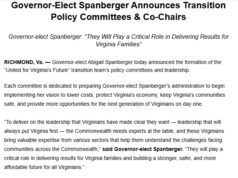( – promoted by Dan Sullivan)
 At an E-Coalition event last weekend one discussion centered on Environmental Injustice and addressed what are sometimes referred to as “sacrifice zones.” In 1994, then President Bill Clinton signed Executive Order No.12898 aimed at environmental justice in low-income and minority populations. Do the proposed natural gas pipelines violate that order?
At an E-Coalition event last weekend one discussion centered on Environmental Injustice and addressed what are sometimes referred to as “sacrifice zones.” In 1994, then President Bill Clinton signed Executive Order No.12898 aimed at environmental justice in low-income and minority populations. Do the proposed natural gas pipelines violate that order?
From a Daily Kos article last February entitled, Racist Sacrifice Zones With XL Pipeline Are Grounds Alone for Rejecting Permit:
For years, low-income and minority areas have been targeted to benefit corporations. Many corporations have a history and pattern of locating energy and other projects in or near minority, Indian or low-income communities.
They force the burdens of projects designed (they say) to benefit society primarily on these targeted communities, which can thus create “sacrifice zones.”
The projects devastate the lives of the people in these zones by harming their culture, health, lives, lands, natural resources, wildlife, homes and/or quality of life. These people are marginalized by commodifying them. They are harmed in the name of the “greater good” of the dominant culture for the provision of energy and disposal of waste.
Beneficiaries of these zones are the corporations operating the projects for huge profits and the dominant culture society, who are provided energy to run their air conditioners or cars without suffering the extreme harms forced on the targeted community in the sacrifice zone.
The US Census Bureau’s color-coded Percent in Poverty map helps illustrate that both the proposed Mountain Valley and Atlantic Coast Pipelines have been placed in rural areas, many of which are stricken with high poverty rates, populated by low income families, and/or consist of minority communities. The contrast along the path of the proposed pipelines is telling:
The E-Coalition’s Eco-Fest last Saturday was set up to offer West Virginians information on two 42″-pipelines which will dissect their communities. The first, Dominion’s proposed 550-mile Atlantic Coast Pipeline, begins in the Clarksburg, WV area traversing through Harrison, Lewis, Randolph, Upshur and Pocohontas Counties before reaching Virginia’s borders. A second pipeline begins in the area around Mobley, WV. The Mountain Valley Pipeline, is 330-miles and planned by EQT and NextEra Energy and will travel south through West Virginia, entering Virginia into Giles County, moving through Pulaski, Montgomery, Floyd, Franklin and finally Pittsylvania, where it will intersect with Transco’s Compressor Station 165 in Chatham.
In West Virginia, energy companies have been allowed to devastate the environment with mountaintop coal removal and are now compounding the environmental issues with fracking in the Marcellus shale. While the energy companies make off with millions, West Virginians are being stripped of their natural resources and its people left with black lung, and contaminated land, water and air. The median household income in WV is $40,400, the average owner occupied home value of $97,300 is among the lowest in the region, and the state’s poverty rate sits at 17.6%. The proposed ACP would further devalue the private property of West Virginians and fracture and degrade the Monongahala and George Washington National Forests.
Making its way from West Virginia into Virginia through Highland and Augusta Counties, the ACP, instead of traversing into Albemarle, Fluvanna and onto Cumberland County where poverty rates are lower and minority and low-income communities are more scarce, Dominion chose a route from Highland and Augusta into Nelson, Buckingham, Cumberland, Prince Edward and on toward the southeast. A side-by-side comparison of neighboring counties shows a stark contrast in land and home values, poverty rates, population and basic standards of living. For example, Albemarle’s population is 103,00 versus Nelson’s 14,789; African American population percentages 9.8% versus 12.9%; Median Household Income $67,797 vs. $48,888; Owner Occupied Home Values of $332,400 for Albemarle and $195,00 for Nelson with poverty rates of 8.9% in Albemarle versus Nelson’s 11.6%
An even more stark contrast is presented in comparing Fluvanna and Buckingham. Fluvanna’s population is 25,977 with 15.5% of the population being African American. In Buckingham, total population is 17,136 with 34.8% of the total population being African American. Median household income rises to $71,181 in Fluvanna while Buckingham sits at $37,843. Owner occupied home values are within a few thousand of the state average in Fluvanna at $234,700 versus Buckingham’s home value sitting $117,500 and the poverty rates…Fluvanna’s 6.7% versus 24.7% in Buckingham County. These comparison’s hold true throughout the path of the pipeline. By moving one or two counties north of the proposed ACP route in Virginia, poverty rates, as well as low-income families and minority populations dwindle.
The same types of comparisons can be found within county borders in the path of the ACP. In Nelson, the proposed ACP route steers clear of all of the properties located within Wintergreen Resort, whether on the mountain or those located in Stoney Creek in Rockfish Valley. Instead the proposed route goes through farms, forest lands, and very near low-income communities or through family-owned businesses where family members have spent their entire lives working to build successful businesses. In an effort to bypass a tract of land in a conservation district, Dominion moved the proposed path of the ACP on to several small pieces of property of an acre or so, along Route 56 near Wingina. Those small properties will mostly likely be condemned.
The comparisons are being made, not to insinuate the ACP should be built in Albemarle or Fluvanna, or even within the confines of Wintergreen Resort. They are presented here simply to illustrate the options available to Dominion and the choices Dominion’s company executives ultimately made.
As the path of the ACP moves into North Carolina, it becomes even more clear the choices being made at Dominion, as the proposed pipeline traverses communities with minority populations of 58% and 53% in Northampton and Halifax Counties with home values less than 50% of state averages, and with poverty rates well above state averages at 25.3%, 26.5%, and as high as 31.9% in Robeson County.
Here at home, in Virginia, approximately 550,000 or 6.6% of the population live in the 13 counties the proposed ACP will traverse, but 31.9% or 174,703 of those citizens are African American-a much higher rate than the statewide average of 19.7%. Of the 550,000 human beings, 157,447 live in the 10 rural counties of Highland, Nelson, Buckingham, Prince Edward, Cumberland, Nottoway, Brunswick, Greensville, Dinwiddie and Southampton. The average minority population across these 10 rural counties is 33.7% or 53,060 African Americans citizens, 14% higher than the statewide average. The median household income average for these counties is $42,550, only 67% of the statewide average of $63,636. The 10-county average for home values these citizens and their children live in is $143,400, just 57% of the $249,700 statewide marker. The average poverty rate among the 10 rural counties is 17.6%, half again higher than the Commonwealth’s 11.1% poverty rate.
Most in the path of the ACP will receive no local benefit, but will suffer the fracturing, degradation and devaluation of their private property, our public lands, the environment, and their way of life. Why would Dominion choose as its “best possible route” communities like Highland, Nelson, Buckingham, Prince Edward, Cumberland, Brunswick, Southampton, Nottoway, Greensville, and Dinwiddie? Conjecture would lead one to believe nothing more than money. It certainly would be more expensive to purchase the rights-of-way in counties like Albemarle, Fluvanna, or Goochland. They, because of their standards of living, would also have many more resources to fight the path of the ACP were it located in those jurisdictions.
Many of the citizens in the 10 rural Virginia localities don’t have the wherewithal to hire lawyers to represent their best interests against a corporate giant like Dominion who has the backing of the Governor not only of Virginia, but of North Carolina and West Virginia! Many of our citizens on the path of the ACP cannot afford to hire the appraisers required to determine the value of the property they will lose. In the end, the path chosen is easier, and much more profitable for Dominion. Being the good neighbor Dominion is, it will force them to “sacrifice” their land, their homes, their way of life for the “greater good.”




![Saturday News: “Trump’s latest tariff TACO probably won’t make your life more affordable”; “The Epstein Email Cache: 2,300 Messages, Many of Which Mention Trump”; “[MTG] questions if Trump is still the ‘America First’ president”; “Jim Ryan tells all: ‘What did the Governor know, when did he know it?’”](https://bluevirginia.us/wp-content/uploads/2025/11/montage1115-238x178.jpg)







![Saturday News: “Trump’s latest tariff TACO probably won’t make your life more affordable”; “The Epstein Email Cache: 2,300 Messages, Many of Which Mention Trump”; “[MTG] questions if Trump is still the ‘America First’ president”; “Jim Ryan tells all: ‘What did the Governor know, when did he know it?’”](https://bluevirginia.us/wp-content/uploads/2025/11/montage1115-100x75.jpg)

